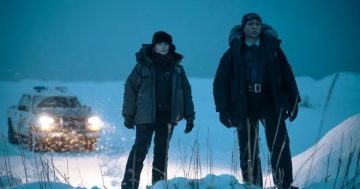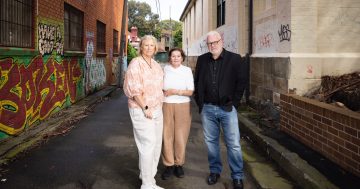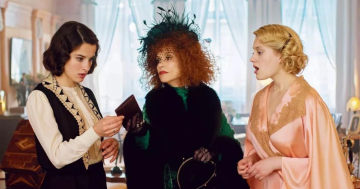Reviewed by Robert Goodman.
By Maryrose Cuskelly, Allen and Unwin, $32.99.
 The Cane is Maryrose Cuskelly’s first crime fiction outing after a some non-fiction releases including the true crime book Wedderburn: A true tale of blood and dust. The Cane, set in the cane fields of Northern Queensland follows a recent trend of Australian rural crime fiction debuts to set their action in the past – in this case the 1970s (other recent examples include Greg Woodland’s The Night Whistler and Matt Nable’s Still). This allows for an exploration not only of place but of time and the attitudes prevalent in that time.
The Cane is Maryrose Cuskelly’s first crime fiction outing after a some non-fiction releases including the true crime book Wedderburn: A true tale of blood and dust. The Cane, set in the cane fields of Northern Queensland follows a recent trend of Australian rural crime fiction debuts to set their action in the past – in this case the 1970s (other recent examples include Greg Woodland’s The Night Whistler and Matt Nable’s Still). This allows for an exploration not only of place but of time and the attitudes prevalent in that time.
The sugar cane growing town of Quala is the sort of place where someone who has lived there for thirteen years is still considered a “blow-in”. The book opens with the town and the nearby centre of Kaliope being rocked by the disappearance of a teenage girl. Janet McClymont went missing while walking through the cane fields to her neighbours’ house to babysit. And despite days of manhunt within the town no sign is found. It is the 1970s and the conservative Queensland town is also being challenged by a teacher with some modern ideas which immediately makes him suspect and the appearance of a female police detective from Brisbane. cuskelly builds all of her plot threads up to page-turning finale not based around some raging psycho-killer but rather fundamental forces of nature and the result of community pressures.
Cuskelly unspools the tale through the eyes of a range of characters, at least one of the narrative strands giving it the feel of a true crime interview. One of those characters is primary school-aged Essie, whose is quickly losing her innocence thanks both the events in the town and her older and too-mature new friend Raelene. Others include Essie’s mother Connie, Carmel the police detective, fish-out-of-water teacher Eamonn Sullivan and Ern, the local high school principal.
The Cane could probably be described as a “slow burn” – the plot leans much more on its social commentary and observation than on the crime that sits at its centre. But Cuskelly uses her mystery as an effective vehicle for exploring the time and place in particular the social changes that were sweeping not only Australia but other parts of the world at the time through the lens of a community that was built on its traditions. It is interesting to consider Cuskelly’s true crime background in the way the plot plays out. The procedural element is wrapped up more through good luck than good management and some questions are left dangling, which is probably a better reflection of the way the world works than readers often get in crime fiction.
Over 700 more reviews can be found on Pile by the Bed.











